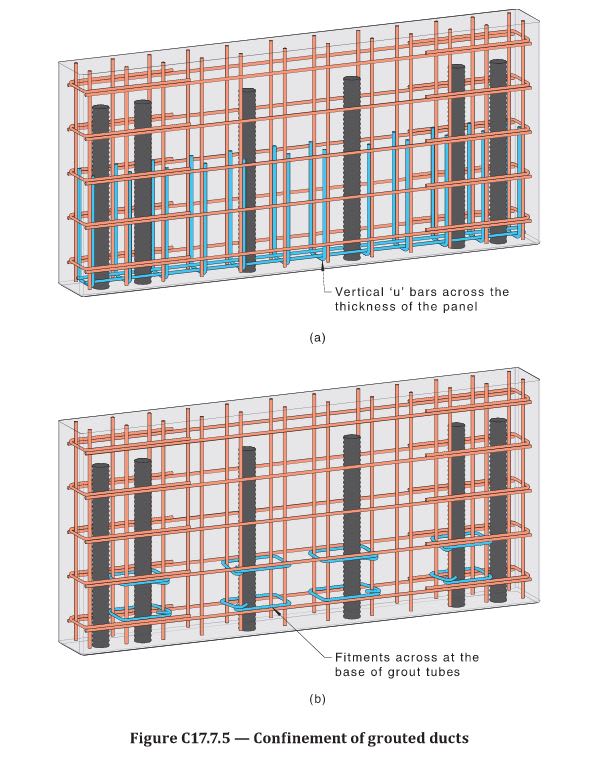Hi Team. One of the issues I have been encountering in New Zealand is the detailing of precast panels on drossbach ducts. NZS3101 (concrete code) does not seem to provide much help in this case and I see a lot of engineers reference the detail from SESOC Interim Design Guidance, where you have to provide confinement to ALL the ducts.
I do understand that these are the areas subjected to stress reversal, but it seems overkill to provide hoops around the ducts outside compression regions, considering the fact that we are limited to nominally ductile loads due to shear-friction provisions. Furthermore, it seems there is a good degree of confinement for the bars outside the compression zone region, provided by the links between the horizontal rebars.
It would be great to get some feedback from the practicing engineers justifying it one way or the other. There has been a bunch of tests done here in NZ illustrating that the confinement helps for panels to undergo quite high ductilities, but again, we would rarely design these panels to be anything but nominally ductile.
Regards
Tim
I do understand that these are the areas subjected to stress reversal, but it seems overkill to provide hoops around the ducts outside compression regions, considering the fact that we are limited to nominally ductile loads due to shear-friction provisions. Furthermore, it seems there is a good degree of confinement for the bars outside the compression zone region, provided by the links between the horizontal rebars.
It would be great to get some feedback from the practicing engineers justifying it one way or the other. There has been a bunch of tests done here in NZ illustrating that the confinement helps for panels to undergo quite high ductilities, but again, we would rarely design these panels to be anything but nominally ductile.
Regards
Tim


